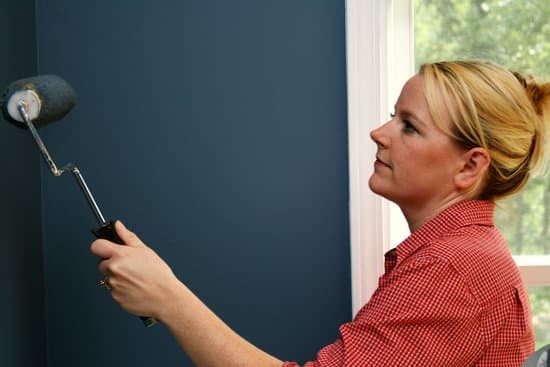Embarking on a home improvement project is an exciting endeavor for homeowners. The anticipation of transforming their living spaces and creating the home of their dreams often fills them with great enthusiasm. However, amidst the excitement, there also lies the potential for things to go awry, leading to a nightmare that many might never have anticipated.
In this article, we delve into the world of home improvement gone wrong, uncovering the risks and consequences that can arise when projects don’t go according to plan. We aim to shed light on the challenges faced by homeowners when their visions are compromised and provide guidance on how to avoid such nightmarish scenarios.
Home improvement projects can quickly turn sour due to various factors – from poor planning and common mistakes made during renovations to unreliable contractors or even ambitious DIY attempts gone awry. By understanding the nightmares that others have faced, readers can be better equipped to navigate their own renovation journeys with caution and foresight.
Join us as we explore real-life stories, expert advice, and practical examples throughout this article series. Together, let’s discover how to protect ourselves from the horrors of home improvement gone wrong while still achieving our dream homes.
Common Mistakes Made During Home Improvement
Lack of Planning and Research
One common mistake that homeowners often make during the home improvement process is failing to adequately plan and research their project. It can be tempting to dive right into a renovation without taking the time to fully understand the scope of the project or create a detailed plan.
However, this lack of preparation can lead to costly mistakes down the line. Before starting any home improvement project, it is crucial to take the time to thoroughly plan and research every aspect of the renovation.
Underestimating Costs
Another frequently observed mistake is underestimating the costs involved in a home improvement project. Homeowners may have a general idea of their budget, but they often overlook additional expenses that can arise during construction.
Whether it’s unexpected material costs, labor fees, or permit fees, these unforeseen expenses can quickly add up and put a strain on your budget. To avoid this mistake, it is essential to create a detailed budget that includes not only the obvious costs but also allowances for potential surprises.
Ignoring Professional Advice
Many homeowners make the mistake of disregarding professional advice and attempting to handle complex renovations themselves. While DIY projects can be rewarding, certain tasks require expertise and experience that only professionals possess. Ignoring professional advice can result in improper installations, shoddy workmanship, and even safety hazards.
It is crucial to know your limitations and consult with experts when necessary. By working with professionals who have the skills and knowledge required for specific projects, you can ensure that your home improvement endeavors are completed safely and effectively.
Avoiding these common mistakes during your home improvement journey will greatly increase your chances of success. Remember: thorough planning and research, accurate cost estimation, and seeking expert advice when needed are key elements in ensuring a smooth renovation process.
The Domino Effect
One of the most important things to understand about home improvement projects is the interconnectedness of various elements. When it comes to renovations, one small mistake can have a domino effect on the entire process, potentially leading to disastrous consequences. In this section, we will explore how even a minor mishap can spiral into a major catastrophe and share real-life stories that highlight the ripple effect of these mistakes.
The Interconnectedness of Home Improvement Projects
When homeowners embark on a renovation project, they often focus on specific areas or aspects of their homes that they want to improve. However, what many fail to realize is that different parts of a house are often interconnected. Making changes in one area can have implications for others.
For example, while remodeling a bathroom, if there is an issue with plumbing that goes unnoticed or unresolved, it can cause water damage that spreads to adjacent rooms or even compromise the structural integrity of the house. Similarly, installing new electrical fixtures without proper knowledge and expertise could lead to wiring problems that pose fire hazards.
Tales of Minor Mishaps Turned Major Catastrophes
Real-life stories serve as cautionary tales about how one small mistake during a home improvement project can quickly escalate into a full-blown disaster. For instance, homeowners starting with painting their living room might accidentally puncture pipes hidden behind walls, resulting in extensive water damage and the need for expensive repairs.
In another case, replacing flooring in one room without addressing underlying foundation issues could lead to uneven floors throughout the entire house or even structural instability. These examples illustrate how seemingly minor errors can create costly and time-consuming problems that require significant remediation.
By understanding the interconnectedness of home improvement projects and learning from past experiences shared by others, homeowners can be more vigilant and proactive in avoiding these domino effects. Taking precautions and seeking professional advice before starting any renovation work can greatly minimize the chances of a minor mistake turning into a major disaster.
When Contractors Fail
Homeowners often rely on contractors to bring their home improvement visions to life. However, the unfortunate reality is that not all contractors are reliable or qualified for the job. This section delves into the disheartening tales of homeowners’ disappointing home improvement experiences and provides valuable tips on how to choose a reputable contractor.
One of the most common issues homeowners face is hiring a contractor who fails to meet expectations. From shoddy workmanship to missed deadlines, these experiences can quickly turn a dream renovation into a nightmare. For example, Sarah Johnson hired a contractor to remodel her kitchen, but was left with unfinished cabinets and poor electrical wiring. The incompetence and lack of professionalism resulted in extra costs and additional stress.
To avoid falling victim to similar situations, it’s crucial for homeowners to thoroughly research and vet potential contractors before hiring them. Here are some tips to help you choose a reputable contractor:
- Ask for recommendations: Reach out to friends, family, or neighbors who have recently completed home improvement projects and inquire about their experiences with contractors.
- Check credentials: Verify that the contractor is licensed and insured. Request references from previous clients and follow up with them regarding their satisfaction with the contractor’s work.
- Get multiple quotes: Obtain quotes from different contractors for comparison purposes. Be wary of unusually low bids as they may indicate subpar materials or craftsmanship.
- Review contracts carefully: Before signing any agreements, ensure that you understand all terms and conditions outlined in the contract, including payment schedule, project timeline, and warranties.
By taking these precautions and investing time in selecting the right contractor, homeowners can minimize the risk of disappointing home improvement experiences.
| Tale of Disappointing Experience | Lesson Learned |
|---|---|
| Sarah Johnson’s unfinished kitchen remodel due to incompetent contractor | Thoroughly research and vet potential contractors before hiring; check licenses, ask for references, and obtain multiple quotes. |
| John Thompson’s bathroom renovation delayed by weeks due to unreliable contractor | Set clear expectations and deadlines upfront, and ensure the contractor is committed to meeting them. |
| Lisa Anderson’s flooring installation botched by unqualified contractor | Verify the contractor’s experience and expertise in the specific type of project you need assistance with. |
By being proactive and cautious in their selection process, homeowners can significantly reduce the likelihood of encountering disappointing home improvement experiences. It is crucial to remember that a reputable and reliable contractor will not only provide quality workmanship but also enhance the overall renovation journey.
The High Cost of Poor Planning
Poor planning in home improvement projects can lead to costly consequences. Without a comprehensive and well-thought-out plan, homeowners may encounter unexpected expenses, project delays, and the need for additional repairs. It is crucial to prioritize careful planning and budgeting to ensure the success and financial stability of any renovation.
One of the main financial implications of poor planning is the occurrence of unexpected expenses. When homeowners fail to thoroughly assess all aspects of their project, they run the risk of underestimating costs. This can result in having insufficient funds to complete the renovation or needing to make compromises on the quality of materials used. Additionally, unforeseen issues that arise during construction, such as outdated wiring or structural damage, may require immediate attention and incur significant unplanned costs.
Project delays are another common consequence of poor planning. Inadequate scheduling or failure to account for potential setbacks can cause major disruptions in the timeline of a home improvement project. These delays not only result in inconvenience for homeowners but can also have financial repercussions. For example, if a renovation runs behind schedule, homeowners may be forced to continue paying for alternative living arrangements or storage solutions while awaiting completion.
Furthermore, poor planning often leads to the need for additional repairs down the line. Rushed decision-making and cutting corners during a renovation can result in subpar workmanship that requires fixing or redoing later on. This not only adds extra expenses but also prolongs the overall duration of the project and creates further frustration for homeowners.
To avoid these financial pitfalls associated with poor planning, it is essential to create a comprehensive plan and budget before initiating any home improvement project. Take into account all necessary materials, labor costs, permits, and any potential contingencies. Consulting with professionals or experienced contractors can provide valuable insight into proper budgeting and realistic timelines.
| Consequences | Examples |
|---|---|
| Unexpected expenses | Underestimating costs, unforeseen issues during construction |
| Project delays | Inadequate scheduling, failure to account for setbacks |
| Additional repairs | Rushed decision-making, subpar workmanship |
DIY Disasters
Embarking on a do-it-yourself (DIY) home improvement project can be an exciting and rewarding experience. The sense of accomplishment that comes with completing a renovation or repair on your own can be incredibly fulfilling. However, it is crucial for homeowners to recognize their limitations and know when to call in professional help. Unfortunately, many ambitious homeowners often bite off more than they can chew, resulting in DIY disasters.
One common DIY disaster that homeowners encounter is tackling complex renovations without the necessary skills or knowledge. From electrical and plumbing work to structural changes, certain projects require expertise and experience that may not be possessed by the average homeowner. Without proper training, attempting these types of projects can lead to costly mistakes, including damage to the home or even personal injury.
To avoid DIY disasters, it is important for homeowners to assess their capabilities realistically and seek professional assistance when needed. Here are some common DIY disasters to watch out for:
- Inaccurate measurements: One of the fundamental mistakes homeowners make is taking inaccurate measurements before starting a project. This can result in ill-fitting materials or fixtures, leading to wasted time and money.
- Lack of understanding: Many DIYers underestimate the amount of research and knowledge required for successful home improvement projects. Failing to understand construction techniques or materials can have disastrous consequences.
- Improper tools or equipment: Using incorrect tools for a job can not only yield poor results but also pose safety hazards. It is crucial to invest in the right tools and equipment or consult professionals who have access to them.
While there are numerous resources available online, such as tutorials and step-by-step guides, it is important for homeowners to recognize their limits and understand when professional assistance is necessary. For more complex projects or those requiring specialized skills, it is always better to consult with a professional contractor or tradesperson who can ensure the job is done safely and correctly.
Remember, the goal of home improvement projects should be to enhance the value and enjoyment of your home, not to create additional problems. By being honest about your abilities and seeking professional help when necessary, you can avoid DIY disasters and achieve successful results in your home improvement endeavors.
The Emotional Toll of Home Improvement Failures
Home improvement projects often come with a mix of excitement and anticipation for homeowners. However, when things go wrong, the emotional toll can be significant. This section will delve into the emotional impact of home improvement failures, exploring the frustration, disappointment, and stress that can arise during these challenging situations. It will also provide readers with coping mechanisms and proactive strategies to manage their emotions throughout the renovation process.
One of the most common emotions homeowners experience when faced with home improvement failures is frustration. Whether it’s a contractor failing to meet deadlines or unexpected issues arising during the renovation process, frustrations can quickly mount.
It’s important to remember that setbacks are a natural part of any project and maintaining a realistic mindset can help in managing frustration. Creating a timeline with buffer periods for possible delays and regularly communicating with contractors or professionals can help mitigate frustrations caused by unforeseen circumstances.
Disappointment is another emotion that frequently accompanies home improvement failures. When envisioned outcomes don’t match reality due to mistakes or subpar results, it is easy for homeowners to feel let down. One way to cope with disappointment is by practicing acceptance and focusing on finding solutions rather than dwelling on what went wrong. Seeking guidance from experts or seeking out alternative ideas may help turn disappointment into a new opportunity for creative problem-solving.
Stress is an inevitable facet of home improvement gone wrong as financial pressures and the disruption of daily routines take their toll. To manage stress effectively, prioritizing self-care is crucial. Engaging in activities that promote relaxation such as exercise, meditation, or spending time with loved ones can alleviate stress levels during difficult times. Additionally, setting realistic expectations and breaking down tasks into manageable steps can relieve feelings of overwhelm and make the process more manageable.
- Create a timeline with buffer periods to manage frustrations caused by unforeseen circumstances
- Practice acceptance and focus on finding solutions rather than dwelling on disappointment
- Prioritize self-care activities such as exercise, meditation, or spending time with loved ones to alleviate stress levels
- Set realistic expectations and break down tasks into manageable steps to relieve feelings of overwhelm
Learning from Mistakes
One of the most valuable aspects of experiencing a home improvement nightmare is the opportunity to learn from your mistakes and prevent similar disasters in the future. While it can be disheartening to face setbacks or failures during the renovation process, these experiences can serve as valuable lessons that can inform and improve future home improvement endeavors. By reflecting on what went wrong, homeowners can develop a more cautious and informed mindset when approaching renovations.
One important lesson to take away from home improvement failures is the significance of thorough planning and research. Rushing into a project without proper preparation increases the risk of encountering unexpected obstacles or making costly mistakes.
Homeowners should take the time to thoroughly assess their desired outcomes, create a comprehensive plan, and set a realistic budget before initiating any renovation work. Additionally, it is crucial to conduct in-depth research on materials, contractors, and potential challenges to ensure all necessary factors are adequately accounted for.
Another key lesson that homeowners can learn from their mistakes is knowing when to seek professional assistance. It is common for individuals to embark on ambitious do-it-yourself (DIY) projects with the intention of saving money or adding a personal touch.
However, complex renovations often require specialized skills and knowledge that may be beyond the capabilities of even the most dedicated DIY enthusiasts. Recognizing one’s limitations and understanding when it is necessary to call in professional contractors can prevent costly errors and ensure quality outcomes.
Furthermore, maintaining open communication with contractors throughout the renovation process is essential for success. Effective communication allows homeowners to clearly articulate their vision, discuss any concerns or changes in plans, and stay updated on the progress of the project. Learning from past experiences involves not only being proactive in vetting potential contractors but also actively participating in ongoing discussions with them.
Conclusion
In conclusion, home improvement projects can be daunting and overwhelming, but with the right approach and preparation, success is achievable. Throughout this article, we have explored the potential risks and consequences of home improvement gone wrong, from common mistakes made during renovations to the domino effect one small error can have on an entire project.
We have discussed the importance of choosing reliable contractors and creating a comprehensive plan alongside the financial implications of poor planning. Additionally, we have highlighted the allure of DIY projects while emphasizing the need to know when professional assistance is necessary.
It is essential for homeowners to recognize and cope with the emotional toll that home improvement failures can bring. Frustration, disappointment, and stress are all normal reactions when things go wrong. However, by implementing proactive strategies and coping mechanisms outlined in this article, such as setting realistic expectations and seeking support when needed, homeowners can navigate these emotions more effectively.
Lastly, we must remember that learning from past mistakes is crucial for future home improvement endeavors. By approaching renovations with a cautious and informed mindset, keeping track of lessons learned from previous experiences, and utilizing the practical tips provided in this article, homeowners can increase their chances of achieving success.
Therefore, as you embark on your next home improvement project, remain optimistic but also be cautious and prepared for potential setbacks. With careful planning, diligent research in selecting contractors or deciding to tackle a DIY project yourself when appropriate, along with managing your emotions throughout the process-you will be on your way to turning your house into your dream home while avoiding any unnecessary nightmares along the way.
Frequently Asked Questions
What can go wrong during a renovation project?
Renovation projects can be complex and unpredictable, and there are several things that can go wrong along the way. One common issue is encountering unforeseen structural problems or hidden damage that requires additional repairs. This can include discovering issues with the foundation, plumbing, or electrical systems that were not initially apparent.
Another potential problem is dealing with unreliable contractors or subcontractors who may not complete the work to a satisfactory standard or within the agreed upon timeframe. Inadequate planning and poor communication can also result in cost overruns, delays, and dissatisfaction with the end result. Additionally, unexpected complications such as bad weather conditions or shortage of materials can further disrupt the progress of a renovation project.
What not to forget when renovating a house?
When renovating a house, it is important not to forget certain crucial aspects. Firstly, one should consider obtaining all necessary permits and approvals from local authorities before commencing any work, as failure to do so could result in legal issues down the line. It is also essential to have a clear budget in mind and to account for potential unexpected expenses or contingencies.
Proper planning should include creating a detailed timeline for each stage of the renovation to ensure everything stays on track. It’s also important to consider future maintenance needs and energy efficiency when choosing materials and appliances for your home renovation. Finally, don’t overlook the importance of safety measures during renovations – ensuring proper ventilation and adhering to building codes will help avoid hazards.
Why are home improvements so stressful?
Home improvements can often be stressful due to a variety of factors. Firstly, there is typically a significant financial investment involved in renovating a house, which can cause anxiety about staying within budget or concerns about overcapitalization if selling in the future. The disruption caused by construction work itself adds strain; living amidst ongoing renovations can be disruptive and inconvenient for homeowners, affecting daily routines and privacy. Moreover, decision-making fatigue can set in when faced with numerous choices related to design styles, finishes, fixtures, and more.
The pressure to make the right decisions can be overwhelming, especially when there are differing opinions within a household. Additionally, unforeseen issues that arise during the renovation process can increase stress levels as they may require additional time, money, and resources to resolve. Lastly, the anticipation of the finished product and the fear of potential disappointment can also contribute to the stress associated with home improvements.

I’m thrilled to have you here as a part of the Remodeling Top community. This is where my journey as an architect and remodeling enthusiast intersects with your passion for transforming houses into dream homes.





